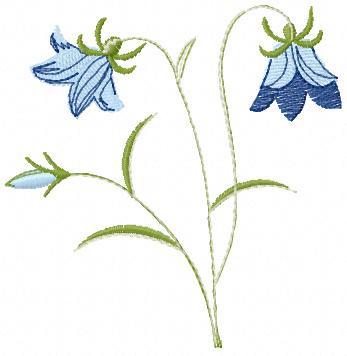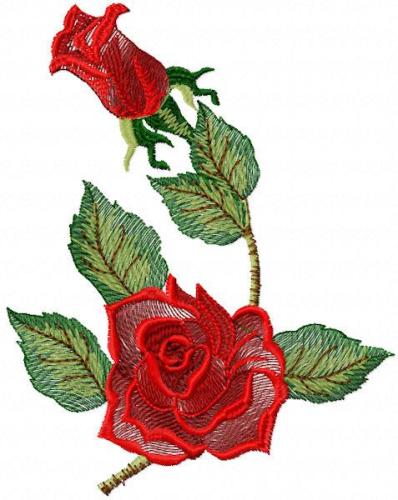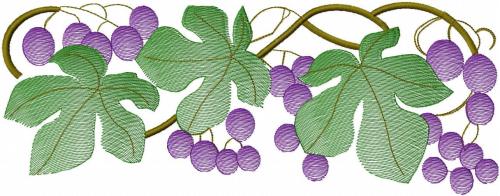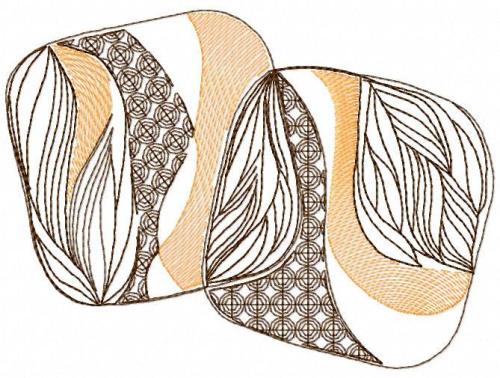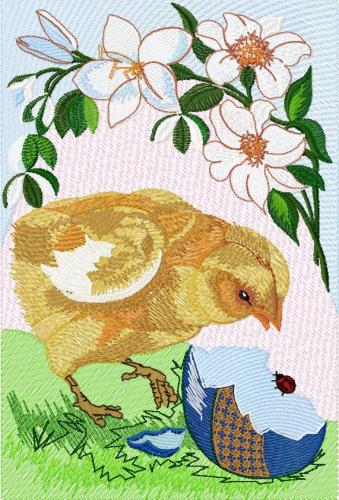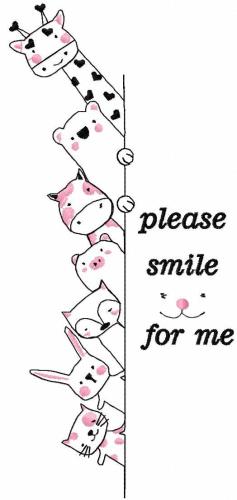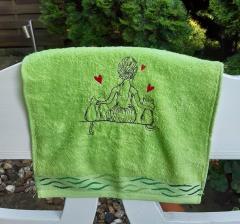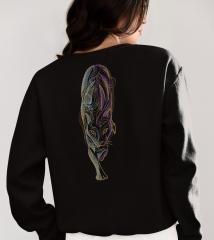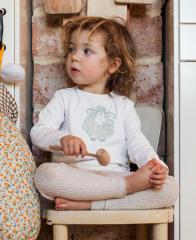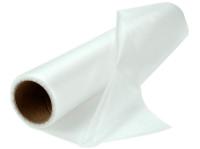
No high-quality machine embroidery is possible without a stabilizer. Various manufacturers offer a gazillion of stabilizers for any taste and budget. Beginners sometimes feel lost in the midst of it all, now knowing which ones to purchase.
Let’s try and figure it out.
Stabilizers can be divided into two types: toppings and backings. Backings are intended to shoulder the load during the embroidery in order to avoid puckering, while toppings are used to prevent stitches from sinking – for example, on piled fabric or loosely-knitted items, – and also partly shoulder the load during the embroidery.
1. Tearaway stabilizers
These stabilizers are made of cellulose or pressurized paper. They are the ones used most often. They are either hooped together with the fabric or separately, with fabric placed upon it and stitched to hold it in place.
Tearaway stabilizers vary in density, measured in g/m2. There is a common belief (a wrong one) that one should pick a lower-density stabilizer for thin fabrics, and higher-density stabilizers – for thick ones. The more support a fabric needs, the denser should be the stabilizer. For example, it’s better to use an 80 g/m2 stabilizer for a capricious satin, while for the dense linen or denim fabric 40 g/m2 will be enough.
A high-quality tearaway stabilizer should be easily removed after the embroidery; when crumpled, it becomes soft and flexible, and in water, it should split into separate fibers.
For me, at this particular moment, the best tearaway stabilizer is an 80 g/m2 Rainbow Doklas, also a tearaway stabilizer by Vilene; the one by Gunold is not so good.
2. Adhesive tearaway stabilizers
They consist of a tearaway stabilizer with a sticky side. They are attached to the fabric by ironing without steam.
These stabilizers are intended for holding in place elastic and stretchable materials so that they don’t spread out during the embroidery. Are often paired with a simple tearaway. An adhesive topping prevents the fibers from stretching, and a tearaway backing shoulders the load during the embroidery in order to avoid puckering.
Density and quality requirements for such stabilizers are the same as for the ordinary tearaways. Vilene stabilizers have a good reputation.
3. Water-soluble stabilizers
These include fusible interfacing and films of varying density.
Fusible interfacing is used:
⦁ for cutwork and lace;
⦁ for 3D embroidery;
⦁ where the wrong side should look neat;
⦁ for the embroidery on netting, etc.
Density also varies. A high-quality stabilizer should be easily dissolved in water, leaving no traces. It is the one most often used as a backing.
Water-soluble films can be thin (20 microns) or thick (about 80 microns).
Thin films are used as a topping for piled fabrics (velour, velvet, fleece, terry cloth, etc.) or loosely knitted materials (jersey, knits) in order to prevent stitches from sinking. They are easily torn away after the embroidery, and the rest can be removed by a slightly wet sponge
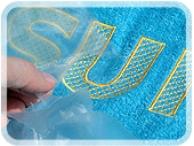
Thin film is used on its own when embroidering lace.
Vilene interfacing materials and Gunold water-soluble films have an excellent track record.
4. Heat-away stabilizers
Are used in a way similar to the water-soluble, with the fabrics that can be damaged by water (velvet, natural silk and so on).
Termofilm Consists of a heat-away film. It’s operating principle is similar to the water-soluble film’s. It is placed on top of the fabric with its grainy side facing down. Iron without steam, moving in circles, will easily remove it. During this, the stabilizers leftovers are rolled into balls that can be brushed off later.
Thermogaze A fusible material used a base fabric for creating lace or as a backing. When heated by an iron, disintegrates into tiny fibers that can be removed by a brush.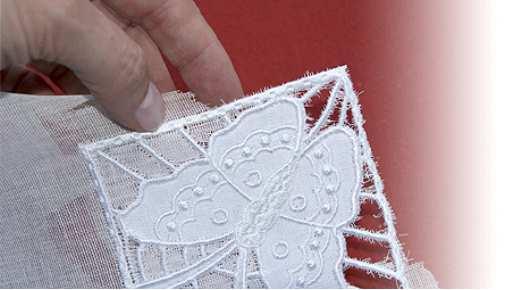
5. Filmoplast
This is an adhesive stabilizer, intended for embroidering of the items and fabrics, which cannot be hooped (leather, fur, small ready items).
Filmoplast is hooped separately with a sticky side facing up. A protective layer slightly bigger than the embroidery area is peeled off, and the item or a piece of fabric is attached onto it.
One of the disadvantages of this kind of stabilizers is that Filmoplast takes effort to remove.
My recommended basic set of stabilizers for beginners:
1. Tearaway stabilizer of a varying density, 2–3 m each
2. Tearaway adhesive stabilizer, 1–2 m each
3. Water-solubles and films, 1 m each
Others are bought on demand, depending on the money available.
Other machine embroidery consumables
Puffy is a puffed up foam used to add volume to the machine embroidery designs.
Temporary spray adhesive Necessary for temporarily gluing the fabric to a stabilizer, such as cutaway, or the appliqué material to the main fabric.
An adhesive should be sprayed onto a stabilizer, not the fabric, in order to avoid stains.
Starch spray Used to stiffen thin or flowing fabrics (chiffon, batiste). A starched fabric is easier to hoop. Sometimes it allows embroidering without other stabilizers. As a result, the embroidery stays soft and flexible.
“Clean backing” is an adhesive interfacing material, used to cover the wrong side of the embroidery out of the aesthetic reasons. It is ironed from the wrong side after the embroidery has been completed.
I hope that this article will help the beginners to make their first steps or broaden the horizons for the more experienced embroiderers in the colorful world of machine embroidery.
Easy stitching to you all!
Edited by diver361
-
 3
3
-
 1
1


